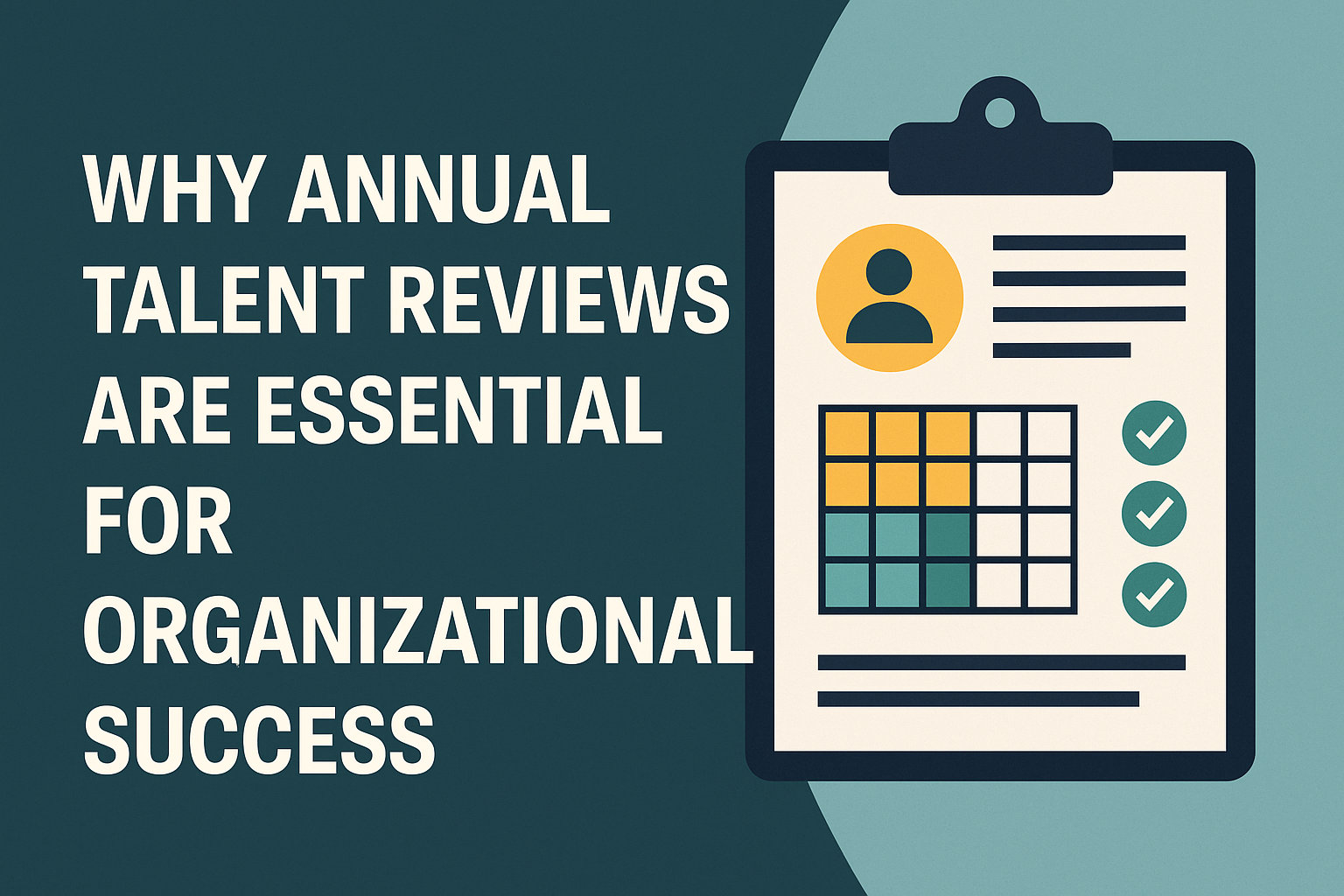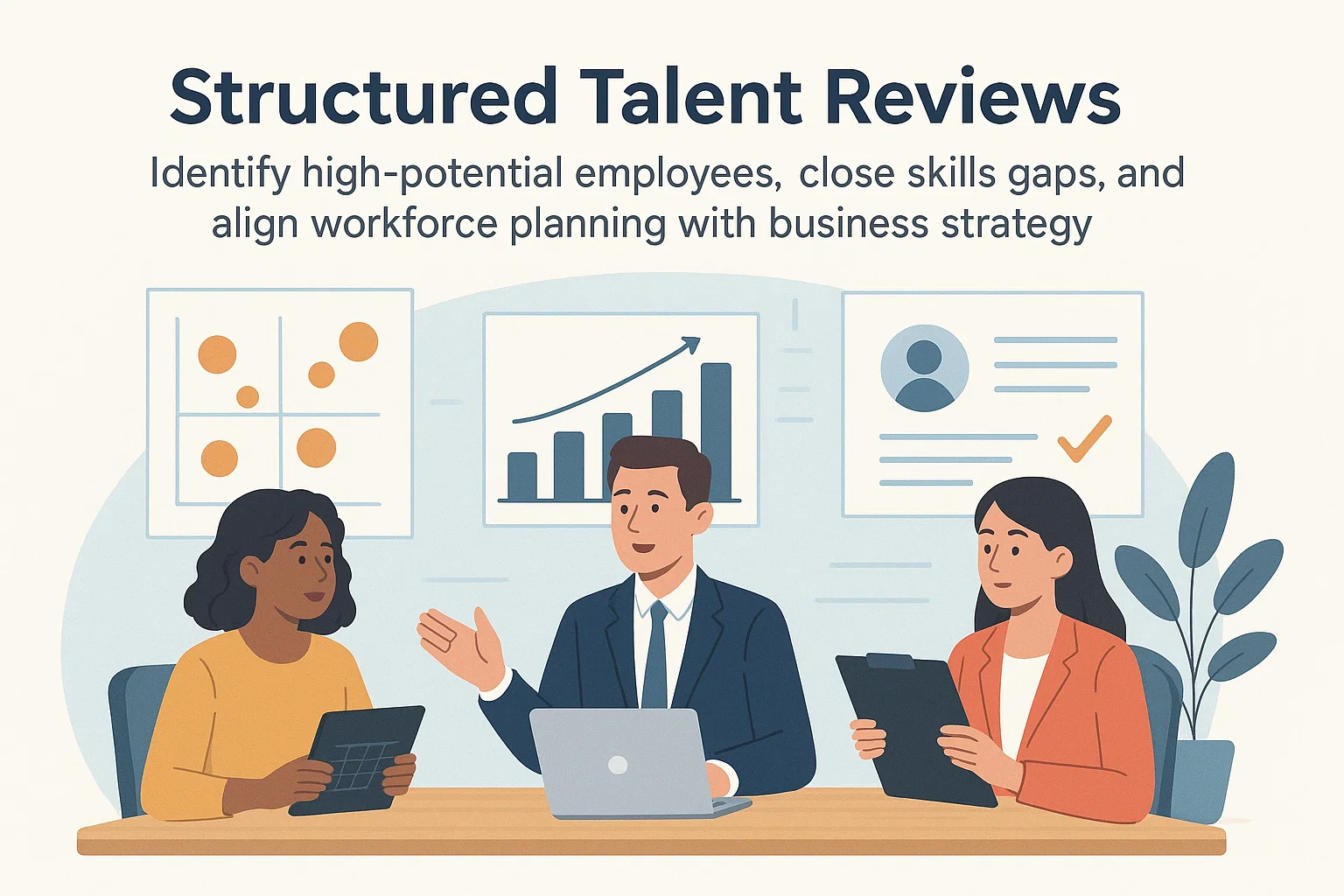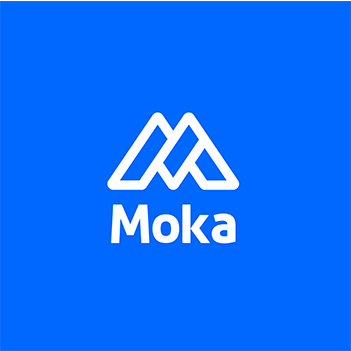Why Annual Talent Reviews Are Essential for Organizational Success
In today’s fast-paced, competitive business environment, talent isn’t just an HR issue—it’s a strategic differentiator.
Yet many organizations still question the value of conducting structured, annual talent reviews:
“We already evaluate employees regularly—why formalize it?”
“It seems like a lot of effort for little outcome.”
“Managers already know who’s good and who’s not.”
These assumptions reflect a core misunderstanding:
Talent reviews aren’t about checking boxes. They’re about future-proofing your workforce.
🎯 What Is a Talent Review?
A talent review is a systematic process that evaluates employees across performance, potential, readiness, and alignment with business goals. It helps answer four essential workforce planning questions:
Key Questions | What It Helps You Do |
|---|---|
Who do we have? | Understand your current talent pool and distribution |
How capable are they? | Assess skills, competencies, performance, and potential |
What are we missing? | Identify skill gaps, succession risks, talent shortages |
What should we do next? | Build development, promotion, and acquisition strategies |
This creates a comprehensive talent map—a foundation for:
Strategic workforce planning
Succession management
Talent pipeline development
Internal mobility optimization
📌 In essence, a talent review is a capability audit of your entire organization.
🌍 Why Do Talent Reviews Need to Happen Every Year?
Markets shift, business strategies evolve, and employee capabilities must keep pace.
Without an annual review, leadership may fail to:
Detect stalled growth or high-potential talent
Realign talent strategies with new business priorities
Spot early signs of attrition or disengagement
Forecast future leadership gaps
Consistency is key: annual reviews provide comparative year-over-year data and support continuous talent calibration.
Organizations that embed talent reviews into their talent management framework gain:
📊 A dynamic talent inventory across all roles and levels
🔍 Real-time visibility into succession pipelines
🎯 Precision in leadership development and performance management
🚀 Increased organizational agility in response to change
✅ No workforce intelligence = No strategic agility
✅ No talent review = No readiness for scale or transformation
⚠️ What Happens If You Skip Talent Reviews?
Here are common issues we see in companies without structured reviews:
Leadership roles open up, but no internal successors are ready
Growth initiatives stall due to lack of qualified team leads
Star performers leave silently, noticed too late
Promotions are based on tenure or guesswork, not data
The talent structure can't support digital transformation or new markets
Without skills gap analysis and talent segmentation, your company risks building a workforce for yesterday’s challenges—not tomorrow’s.

💡 Which Organizations Need Talent Reviews the Most?
If your organization is undergoing any of the following, annual reviews are not optional—they’re critical:
Business Situation | Why Talent Reviews Are Essential |
|---|---|
Rapid expansion | You need leaders who can scale with the business |
Organizational transformation | Align talent with new strategy or structure |
Executive turnover | Identify and develop ready-now successors |
High attrition rates | Understand root causes and retain key contributors |
New product lines or markets | Quickly assess and fill capability gaps |
Generational change | Build a sustainable high-potential talent pipeline |
🔎 Keywords targeted here: succession planning, future leadership readiness, high-potential (HiPo) employee development, talent gap assessment
🏆 What High-Performing Organizations Do Differently
Companies that succeed in building talent-driven cultures:
Use 9-box grids or talent calibration models to guide decisions
Make development proactive, not reactive
Tie talent insights directly to business strategy
Invest in scalable leadership development programs
Enable better employee retention strategies with actionable data
The key difference: they turn talent data into business outcomes.
They understand:
Who to promote and why
Where to invest in upskilling
Which teams need urgent attention
How to build resilient, future-ready teams
✅ From Insights to Action: Using Your Talent Review Outcomes
Talent reviews are only valuable if their results inform action. That means:
Aligning succession plans with actual business expansion needs
Using data-driven decisions to avoid gut-feel promotions
Prioritizing resources for those with long-term growth potential
Integrating talent insights into your workforce development strategy
A modern talent review process includes:
Interactive dashboards and talent analytics
Performance vs. potential matrices
Integration with HRIS or talent management systems (TMS)
Scenario planning for re-orgs, M&A, or market entry
🧩 Final Takeaway: Talent Reviews Are Strategic, Not Administrative
Talent reviews are not an HR chore.
They are a strategic workforce initiative with long-term impact.
With a solid talent review process, you gain:
✅ A clear roadmap for workforce growth
✅ Confidence in your leadership pipeline
✅ Agility to adapt to business disruption
✅ Clarity in resource allocation and upskilling priorities
In 3–5 years, your competitive edge won’t come from cost efficiency alone—it will come from your people.

Frequently Asked Questions (FAQ)
Q1: What is a talent review process?
A talent review is a structured assessment of an organization's workforce to evaluate employee performance, potential, and readiness for advancement. It helps companies align talent with future business needs through talent mapping, succession planning, and strategic workforce planning.
Q2: How often should companies conduct talent reviews?
At least once per year. Annual talent reviews allow organizations to monitor progress, detect skills gaps, and make timely adjustments in leadership development and staffing strategies.
Q3: What are the key components of a successful talent review?
A successful talent review includes performance data, potential assessment (e.g., 9-box grid), succession plans, and action-oriented follow-ups. It should result in a clear talent pipeline, risk identification, and leadership development strategies.
Q4: How is a talent review different from a performance review?
A performance review focuses on past results, while a talent review evaluates future potential and readiness. Talent reviews are more strategic, aimed at long-term organizational growth and agility.
Q5: What are some common frameworks used in talent reviews?
Common frameworks include the 9-box matrix, HiPo identification models, readiness heatmaps, and talent mapping tools integrated with HRIS or TMS platforms.
From recruiting candidates to onboarding new team members, MokaHR gives your company everything you need to be great at hiring.
Subscribe for more information

